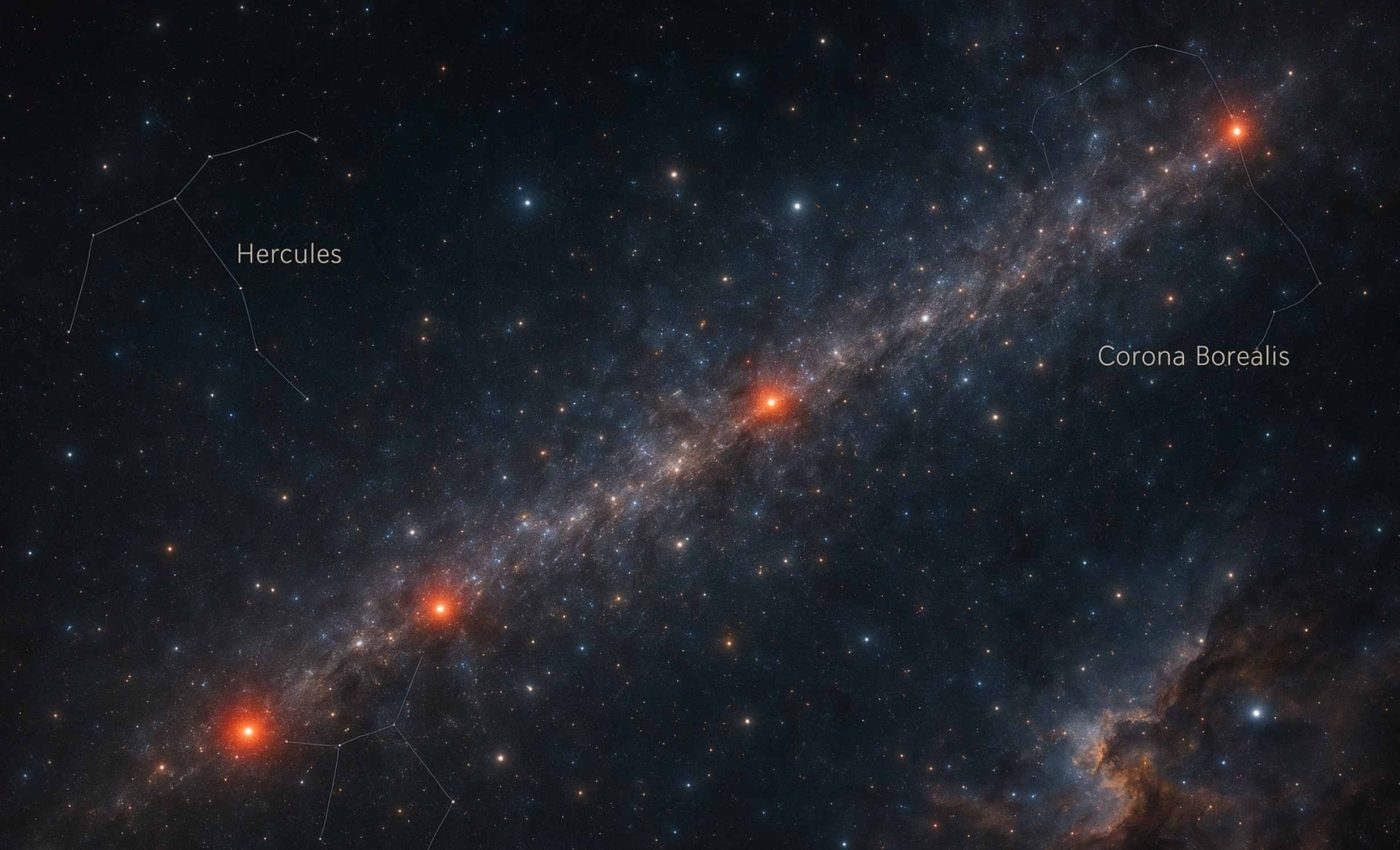
'Largest structure in the universe' is even bigger than astronomers imagined and still a huge mystery
Astronomers have spotted something that appears to stretch around ten billion light years across. This so-called Hercules–Corona Borealis Great Wall is being reevaluated, and it might be more extensive and nearer to Earth than earlier calculations suggested.
Its immense size has fueled discussions about how matter spreads out in the cosmos. Some see it as an oddity that cannot be explained by standard maps of the universe, while others say more data will shed light on its nature.
One person at the center of these efforts is Dr. Jon Hakkila from the University of Alabama in Huntsville. He and his team have examined the way gamma-ray bursts signal the edges of this structure.
Hercules–Corona Borealis supercluster
Researchers label this structure a supercluster because of how it gathers countless galaxies in one region.
They rely on redshifts to estimate distances and found that multiple galaxies, linked by these bursts, cluster in an area bigger than anything else known.
“It is larger than the size of most anything to which it might be compared,” said Dr. Hakkila at the end of a discussion featured in recent observations.
His remark highlights how standard theories about universal uniformity cannot fully account for this sprawling arrangement.
Why bursts matter
Astronomers use gamma-ray bursts to measure cosmic distances because these bursts shine more brightly than typical stellar processes.
They can be powered by supernova events or by merging neutron stars and are detectable across vast stretches of space.
Since these bursts come from catastrophic stellar endings, they appear wherever stars exist in large numbers.
By tracking them, observers gain a glimpse of how far matter extends, even in places that defy straightforward study.
How Hercules–Corona Borealis compares
This wall isn’t the only oversized feature that’s caused a stir.
Structures like the Sloan Great Wall, the Huge Large Quasar Group, and the Giant Quasar Arc have all pushed against the expected boundaries of cosmic uniformity.
Still, the Hercules–Corona Borealis Great Wall dwarfs them.
At around ten billion light years long, it’s nearly twenty-five times the size of the Sloan Great Wall, which was already thought to be massive when it was discovered in 2003.
Why scientists still have doubts
Some astronomers caution that the current GRB dataset might not be complete enough to draw final conclusions.
The precision of burst positions and redshifts isn’t always high, and small errors can create the illusion of larger structures than what actually exists.
There’s also the issue of sampling bias, since parts of the sky are harder to observe due to dust or telescope access. Until more consistent coverage is available, there’s always the chance that what looks like a wall might just be a trick of patchy data.
Any structure beyond about 1.2 billion light years in size is generally viewed with caution by theorists, because the cosmological principle implies matter should look uniform at enormous distances. Yet this giant wall sits right at the limit of what current models can handle without adjustments.
“The jury is still out on what it all means,” said Dr. Hakkila during a recent briefing. Some models can accommodate something so grand, but others fall short.
Hercules–Corona Borealis not fully mapped
One of the biggest hurdles in confirming the wall’s full outline is the limited number of gamma-ray bursts (GRBs) available with known distances.
The team used 542 GRBs in their study, and only about half of those were in the right part of the sky to trace this particular structure.
Because the detection of GRBs depends on many factors – like the brightness of the event, telescope availability, and even sky conditions – the data is naturally uneven.
That unevenness makes it harder to rule out random clustering or signal confusion without more coverage from upcoming missions.
Why does any of this matter?
Astronomers are eager to figure out exactly where this wall starts and ends.
“Since the most distant extent of the Hercules–Corona Borealis Great Wall is hard to verify, the most interesting finding is that the closest parts of it lie closer to us than had previously been identified,” said Dr. Hakkila.
New satellites under development may sharpen the data needed to sort out lingering unknowns.
In the meantime, scientists see the current findings as a reason to reevaluate large-scale structures and how they might push the boundaries of our cosmic road maps.
A proposed European mission called THESEUS (Transient High Energy Sky and Early Universe Surveyor) could change everything.
With its wide field of view and heightened sensitivity, it may detect thousands of new gamma-ray bursts, especially from very distant or faint sources.
If launched, THESEUS would give researchers the dense data they need to finally outline the full size of the Hercules–Corona Borealis Great Wall—or prove that it doesn’t stretch quite as far as it seems.
The study is published in Universe 2025.
—–
Like what you read? Subscribe to our newsletter for engaging articles, exclusive content, and the latest updates.
Check us out on EarthSnap, a free app brought to you by Eric Ralls and Earth.com.
—–













